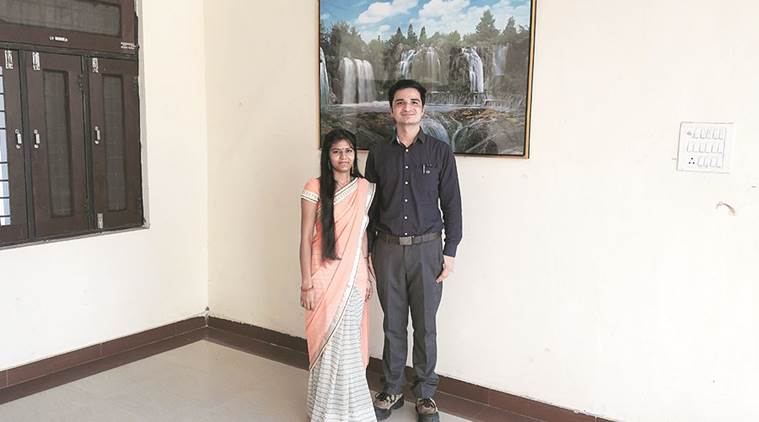
While studying for the final year in gynaecology course at the Aligarh Muslim University, Dr. Arun Choudhary came to hear about the requirement of doctors in Bijapur. He thought the name referred to a district in Karnataka. But his head of department, Dr Seema Hakim informed him that Bijapur was a district in Chattisgarh- at the heart of the Naxal infused region in India.
Chaudhary wasn’t sure if he should take up a job there. Being a young man with his entire career in front of him, he informed his professor that we could go and check out the place for himself. The result was a 1,400 km drive that he took with his wife, Pratibha in July 2015.
“It was raining throughout, and it was just so beautiful. I remember stopping everywhere, and clicking pictures,” says Choudhary.
Lush forests lined both sides of the road on the drive from Bastar to Bijapur. According to Choudhary, they were “singing in the rain.” “We had never seen anything like it before. So even before we got to Bijapur, the battle in the mind was already half won,” he says.
But things were not exactly a song and dance when he reached the understaffed district hospital at Bijapur. He practically walked into an emergency situation as a mother whose labour got obstructed and whose heart rate was dropping was brought in. Though Choudhary was not an employee, the civil surgeon at the hospital pleadingly looked at him. Some time later, Choudhary emerged from the operation theatre(the only one at the time). He carried a crying baby in his arms.
“The signal was clear. I had to stay,” says Choudhary.
Incentives to attract doctors
Afterwards, Choudhary went and met Ayyaz Tamboli, the district collector. Tamboli had introduced an incentive system by which doctors who worked in Bijapur would get higher salaries and better perks.
Thanks to the incentives, Choudhary along with his wife now live in a two-bedroom house in Bijapur. The apartment is part of the transit hostel for doctors and is reminiscent of hostel life. Most of the other doctors who have come over following an SOS put out on social media by the district collector are young. The hostel ethos is a perfect reflection of this, with vibrant posters on the walls and even a table for table tennis.
“I now work in a place where nearly every patient has a desperate need. There are times when one woman with a complication is wheeled in, and as the operation begins, another comes in. The nurses here are excellent, and are always ready, the ecosystem here is of people committed to doing work,” he says.
As for his wife- an English post graduate from Agra university, she teaches at the government school in Bijapur. Her sole complaint is about Choudhary’s odd work hours. “He will put in a shift during the day, but then a woman will be wheeled in at night, and he’ll be off. Food timings are irregular, and every Friday, even when he could take a few hours off, he spends time teaching the nurses on what they must do,” she says.
In the Maoist infringed hinterlands of Bastar, education, healthcare and social indicators are rather low. However, the hospital in Bijapur is pushing forwards- it now has a new blood bank, operation theaters and a 50-bed maternal and child healthcare section. Choudhary, who is now 29 years old, joined the hospital on a two year contract. A year and a half of that contract period is now over.
Whether the doctor would stay on is yet to be decided. However, the District Collector is confident that Choudhary wouldn’t be able to get this kind of experience anywhere else. His question is, “If the administration and environment stay the same, why leave?”
Only Choudhary would be able to answer that.
Image credits: indianexpress.com